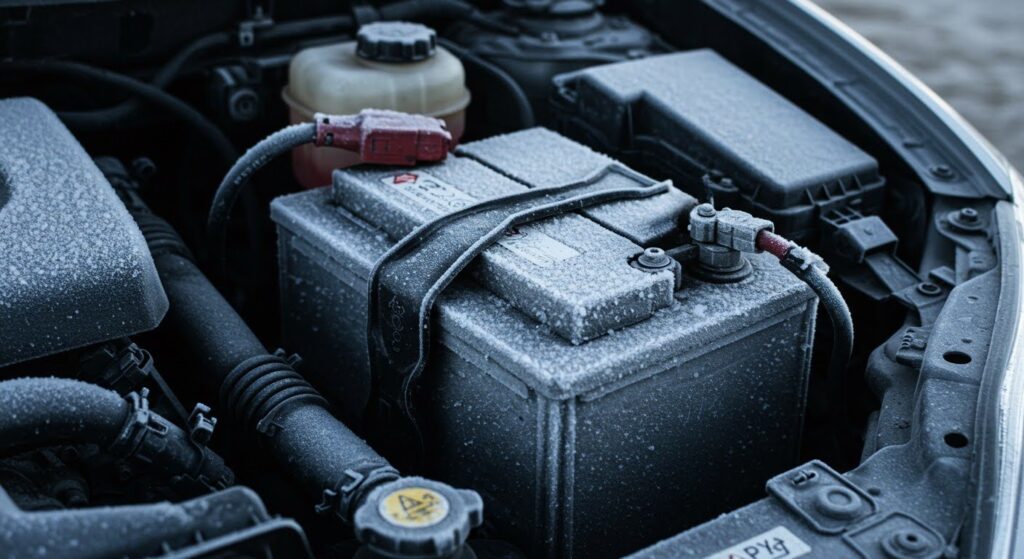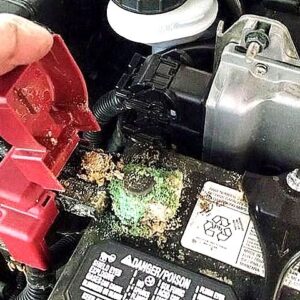
There are several warning signs that the car battery has frozen. The sides of the battery casing might bulge because of the frozen fluid expanding inside the case. If a significant amount of battery fluid freezes, the intense pressure can fracture the case’s sides, leading to fluid leaks. Frost or ice might also form on the battery’s external surfaces, such as around the terminals. If you move the battery, you might not hear sloshing because most of the fluid has frozen solid. The battery terminals might also display increased corrosion. Finally, the car battery might not start the engine because of damage or total discharge.
The car battery holds battery fluid, an electrolyte mixture of sulfuric acid and water. Battery fluid has a low freezing point that prevents it from turning solid except at extremely cold temperatures.
- A fully charged battery (around 12.7 volts) can resist freezing until temperatures drop to about -70°F (-56°C).
- A half-charged battery (around 12.0 volts) may freeze at around 5°F (-15°C).
- A fully discharged battery (around 11.5 volts or lower) can freeze at 32°F (0°C)—the same as water.
A discharged battery is vulnerable to freezing. When the battery discharges, the electrolyte’s sulfuric acid combines with the positive and negative plates. The reaction separates water from the battery fluid. By itself, water has a higher freezing point than the electrolyte. A discharged battery might freeze at temperatures higher than the freezing point of battery fluid.
Tips on How to Access the Frozen Car Battery
Wear protective gear for your eyes and hands. Battery fluid is corrosive to the touch and might leak from cracks in the swollen battery case. Keep it from contacting your bare skin and sensitive parts, like your eyes.
If the car battery doesn’t show any signs of damage, you might be able to recover it. Thaw the frozen battery at room temperature for 24-48 hours. The duration depends on factors like the battery’s size, charge, temperature, and time frozen. Avoid using an external heat source to speed up the thawing; it can damage the battery.
Once the battery fully thaws, you can test it to see if it remains usable. Measure the voltage at the terminals. If the voltage reading is lower than 12.6 volts, charge the battery. After charging the battery to at least 12.6 volts, bring it to a trusted specialist who can perform a load test and determine if you need a replacement.
Any information provided on this Website is for informational purposes only and is not intended to replace consultation with a professional mechanic. The accuracy and timeliness of the information may change from the time of publication.
































